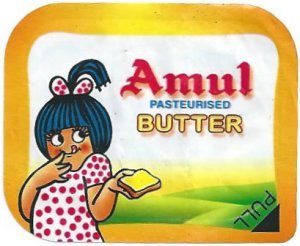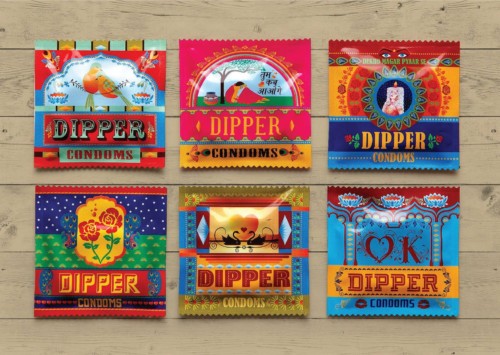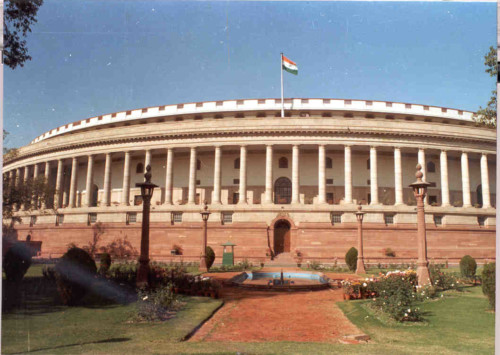Amul producing ads with a twist for decades
Amul Cooperative,reportedly the world’s 13th largest dairy company, has had a long history of producing socially relevant advertisements based on the happenings in and around India. Whether it is politics, social issues or simple pop culture reference, Amul hasn’t disappointed consumers and art lovers alike with their innovative advertising campaigns.
Borrowing from the history of India’s freedom struggle, Amul was conceived when a few farmers, as a symbol of protest against the British Raj, started producing milk in the small town near Anand, in the western Indian state of Gujarat. The journey of India’s transformation from being a net importer of milk into becoming one of the largest producers was initiated by the cooperative called Amul in 1955.
As an answer to Polson, a rival company, Sylvester da Cunha created the Amul girl who continues to be the most endearing household face in the country. With its first ad campaign launched in 1966, Amul credits itself with five decades of the some of the wittiest ads for their butter, on issues that not only concerns an individual, but the world at large, thus earning itself a spot in the Guinness Book of World Records as the longest running ad campaign in the world.
Educational advertising
Taking a look at some of the issues that the Amul ads have covered in the past three months itself helps understanding the impact they make. Anyone aloof of Indian politics or international relations may find themselves educated about important events of the year. The following are ads from the past three months.
The Minister of Culture, Tourism and Civil Aviation of India, Mahesh Sharma, in August, made suggestions through an advisory to tourists visiting India, stating that short skirts are to be avoided. In response, the ad was created.
#Amul Topical : Dress code suggestions for tourists! pic.twitter.com/gpN1RLcWWQ
— Amul.coop (@Amul_Coop) September 2, 2016
The debate and controversy surrounding the ‘ban’ of the burkini in France left Amul girl with an opinion.
#Amul Topical : Burkini ban lifted in France! pic.twitter.com/yzLl1OZZMR
— Amul.coop (@Amul_Coop) August 29, 2016
The Goods and Services Tax bill that was passed in August, making uniform tax laws for consumers across the country was approved by Amul Girl.
#Amul Topical: Transformative tax reform passed! pic.twitter.com/yLQi84HUKv
— Amul.coop (@Amul_Coop) August 5, 2016
When Melania Trump allegedly copied parts of Obama’s first lady speech in her address in July, Amul girl took notice.
Amul Topical: Plagiarising from the First Lady. pic.twitter.com/MHB15sr7QP
— Amul.coop (@Amul_Coop) July 22, 2016
Amul girl had her share of fun thinking about NASA’s space mission to Jupiter.
#Amul Topical: Nasa’s latest mission. pic.twitter.com/1UDFCIoRF3
— Amul.coop (@Amul_Coop) July 6, 2016
Reactions around the announcement of Brexit in June made the Amul girl wave goodbye to the Big Ben in London.
#Amul Topical: #Brexit becomes a reality! pic.twitter.com/R5dpgoXyWs
— Amul.coop (@Amul_Coop) June 24, 2016
Student politics came under the scanner after controversies in Jawaharlal Nehru University in New Delhi, capital of India surrounding an event that was termed “anti-national”, leading to a subtle commentary by the Amul girl.
#Amul Topical: Minister finds salutation objectionable! pic.twitter.com/AUbvkkYfqD
— Amul.coop (@Amul_Coop) June 17, 2016
Impact and scope beyond advertisement
Amul’s legend as an eye-opener towards socially pertinent issues and phenomena is not simply limited to its widely celebrated advertising history. Earlier this year, Amul took charge of the Yavatmal Cooperative Dairy Union in Maharashtra, to boost the income of debt-ridden farmers in the Vidarbha region of the state which is one of the worst affected farmer suicide prone regions.
The making of the Hindi film titled Manthan (1977) was an incredible benchmark in both the history of film-making as well as the history of advertising for Amul. Directed by Shyam Benegal, starring Naseeruddin Shah, late Smita Patil, Amrish Puri and Girish Karnad, and based on the White Revolution in the country initiated by Amul, this was the first film in the world which was not produced by a single production house, but was instead crowd funded by the farmers of the Gujarat Cooperative Milk Federation who put in INR 2 each, amounting to INR 1 million. The collective power exemplified by this iconic film made it to Amul’s brand campaign with its unforgettable song ‘Mera Gaam Katha Parey’ or ‘My village of Katha Parey’ in 1996, inspiring the country by telling the story of progressive women farmers who don’t limit themselves to domestic work thus celebrating their economic independence.
Amul recently started an initiative of 24-hour ATM machines, or Any Time Milk machines, which is India’s first milk vending machine to help the masses. Milk pouches are kept in automatic dispensing machines below 4 degrees, containing 150 milk pouches of 300ml each. The machine is designed to sense only INR 10 currency notes which is the price of each pouch. These vending machines are anticipated to dispense other dairy products from the house of Amul in the near future. Each of these machines is operated by a differently-abled person to provide employment opportunities for all kinds of people in the organisation.
Not for no reason is the Amul Model one of the most sought after business models in the country. And, the avatar of a chubby, polka-dotted frock-wearing girl as its mascot, Amul is omnipresent in every Indian household.













